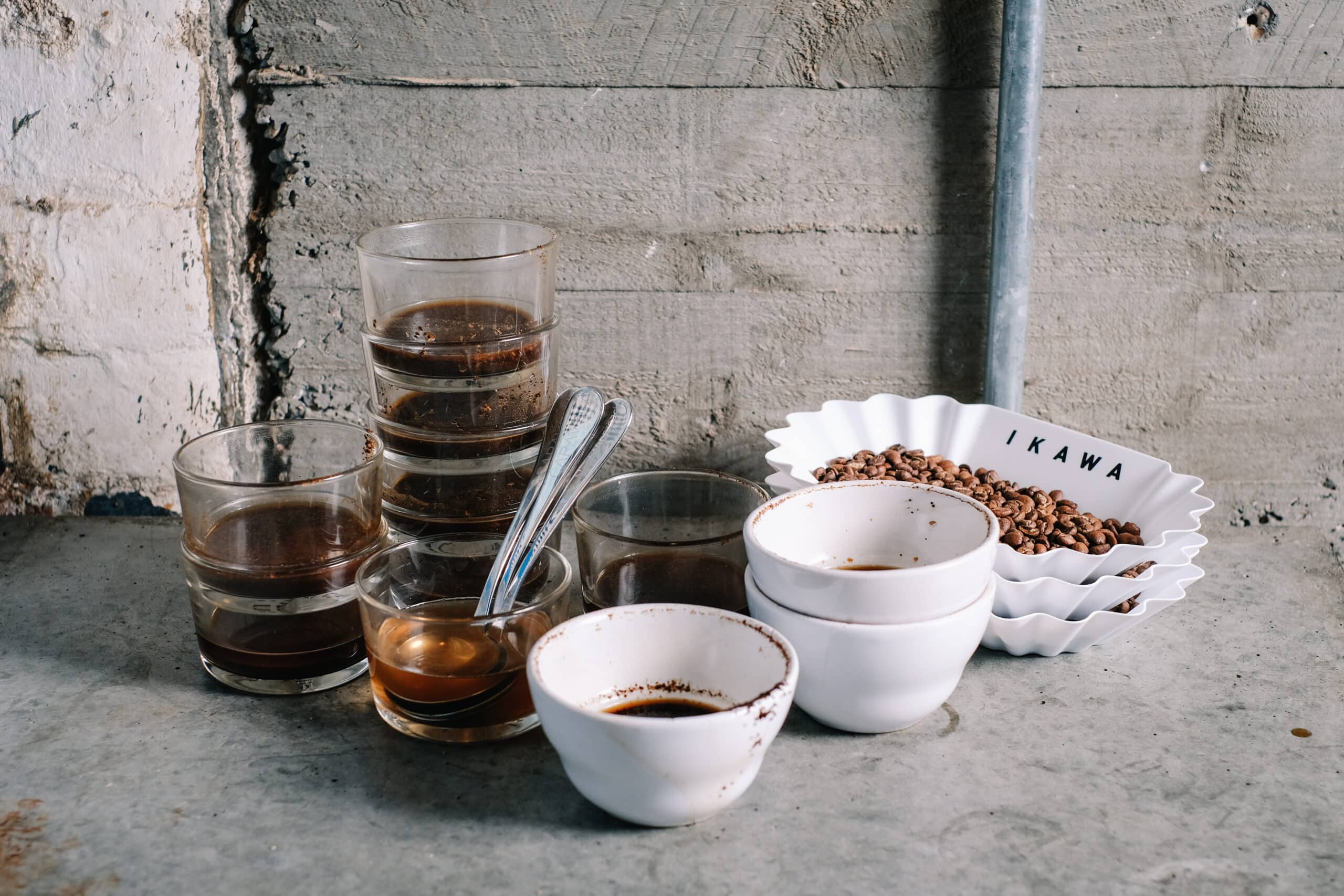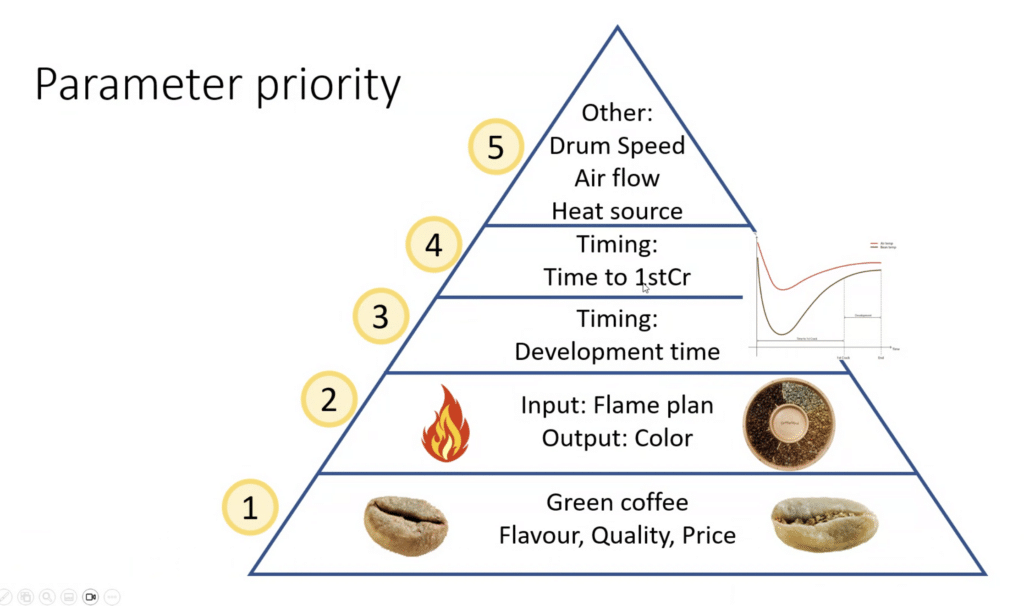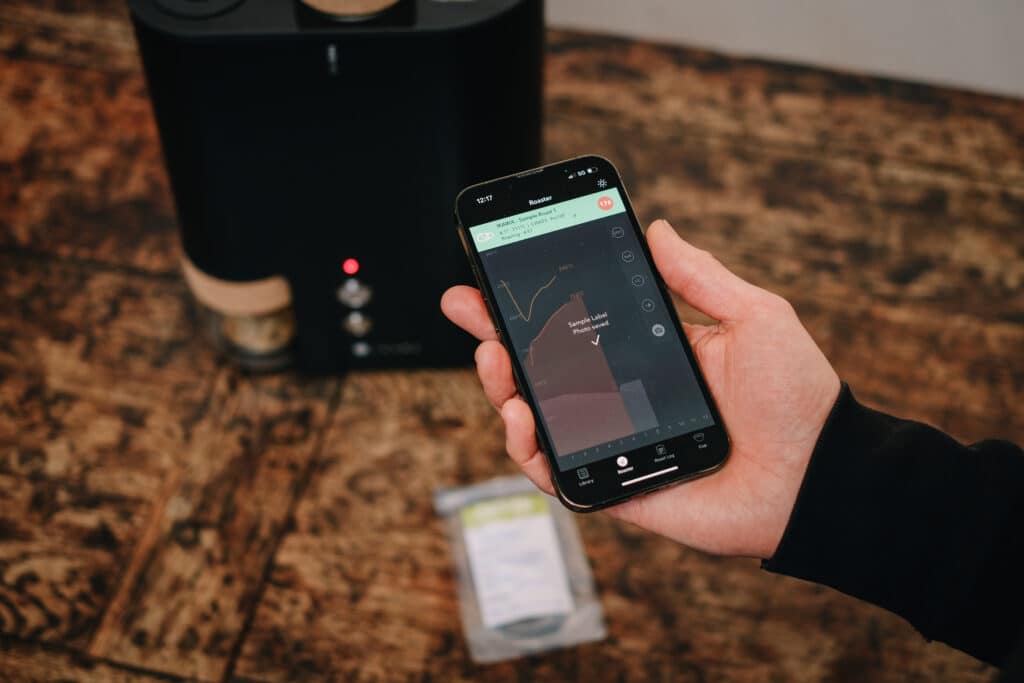
Coffee roasting is not simple. But Morten Münchow, from Coffee Mind in Copenhagen, SCA trainer and coffee researcher, has built a serious case for simplicity in sample roasting.
Coffee roasting is not simple. Production roasters, green coffee buyers and hobbyists around the world are constantly advancing this craft and unlocking new approaches, meant to improve the way we’re working with coffee around the world (what a great time to be working in coffee!).
But what about sample roasting? Does it make sense to approach it the same way you would approach production roasting? Are you supposed to be looking at the same variables production roasters are?
The answer is not as straightforward as (maybe) you were hoping, but Morten Münchow, from Coffee Mind in Copenhagen, SCA trainer, and coffee researcher, has built a serious case for simplicity in sample roasting.
Let’s take it from the top!
In very few words, for evaluation, purchasing, and quality check. A while back, we expanded on small-batch roasting and the differences between roasting for production profiling and actual sample roasting. You can find the full article here.
While sample roasting is helping us make a buying decision or check in on the quality of a lot that’s been in the warehouse for a while, profiling allows us to play and get creative in discovering the best attributes of the coffee we’ve just bought. With this definition in place, it becomes clear that the reason we roast should dictate the variables we’re taking into consideration.
For the sake of the discussion, let’s focus on 2 categories of people who sample roast: green coffee buyers and roasters.
Green buyers taste many coffees and are quickly evaluating how a coffee tastes, if it suits a particular flavor profile, and if it is good quality. On the other hand, production roasters are exploring 1 or a few coffees, looking to see how to bring out the best flavors of that coffee.
Rocky Martakusumah, IKAWA user, Gayo High Land in Indonesia
With all of these different situations, how should we think about sample roasting?
Well, Morten advocates for an approach that somewhat combines them. For smaller operations, this could be really beneficial.
Morten, and CoffeeMind, has been bringing a level-headedness to coffee roasting for a long time now, alongside some really insightful research publications, available for free here. His science-based approach aims to strip what doesn’t matter, and focus on what matters. In his words, a good method is one using the simplest and most specific concepts with the fewest assumptions, otherwise, it’s difficult to be specific and therefore practical in the use of the method.
Generally, his approach is to choose a sample roast that is appropriate to the end result you’re hoping to achieve. If you’re sample roasting a coffee that’s meant to be added into a dark roast blend, then the sample roast cannot be the same one you’re using for a light roast single origin meant for your filter selection.
Then, he proposes the following:
Sample roasting relies on consistency and control. Don’t try to play with all variables at the same time, otherwise, your results will be unclear and you will most likely not be able to really understand how you’ve come to the result you’re looking at. The objective is to achieve a low-impact roast profile that lets the coffee’s natural characteristics come through as much as possible.
Using simple profiles will, once again, allow you to understand which variable adjustment has influenced your results. They are also easy to replicate in different environments and by people with different levels of experience. There is plenty of time for more experimentation later on, during production profiling.
Not all small fluctuations you see in your data translate into noticeable changes in taste. So make sure you’re working with concepts that are easy to understand and monitor in the cup. Morten supports the use of the simplest concepts: Time, Temperature, Energy, and Color when it comes to sample roasting (or learning how to roast in general). All of these can be easily and directly manipulated, observed, and understood.
Sample roast based on the desired outcome. Are you planning to roast the coffee you’re evaluating for espresso? Try an espresso roast! Are you roasting for a knowledgeable crowd or for an older population with clear preferences? Roast for your purpose. When it comes to green coffee buying, for example, Morten has developed a basic profile (that you can see at the end of this article). If he is exploring how the coffee behaves, he’ll start off with the same basic profile and first try different colors, then modulate the development time as these together – according to the research modulate around 95% of the total flavor space of the coffee. According to his method, this is still the simplest and easiest way to understand what roasts suit the coffee best.
A roasting workflow and profile need to be repeatable. By you, your employees, the traders you work with, the farmer you’re collaborating with. This ensures everyone is looking at the same results, talking about the same outcome, and offering customers a standardized experience (by no means a boring one, but simply consistent.)
Morten argues that the priorities in making Roasted Coffee Product should be:
1. Green coffee – flavor, quality and price;
2. Input, in the form of flame plan, and Output, in the form of color;
3. Timing – development time;
4. Timing – the time to the 1st crack;
5. Other – drum speed, airflow, and heat source.

Outside of the green coffee, which is purely your choice, all of the parameters stated above can easily be manipulated on IKAWAs, which allows you to experiment and find the Roasted Coffee Product that suits your needs.
“We feel that the IKAWA is perfect for experiments because of the high control it offers and the ease with which students can roast their own research samples.”

So, whether you’re roasting on an IKAWA or not, next time you’re developing your sample roasting profile or simply looking to update and improve it, maybe take a step back and try simplifying your workflow. Morten has recently shared the roasting profile that he uses as a standard in teaching.
Try it out here.
Morten’s profile:
You can experience more about Coffee Mind’s roasting methodology in Coffee Mind’s
Podcast: CoffeeScience for Coffeepreneurs
Free webinars on Coffee Mind’s YouTube channel
Live IKAWA Roasting classes.